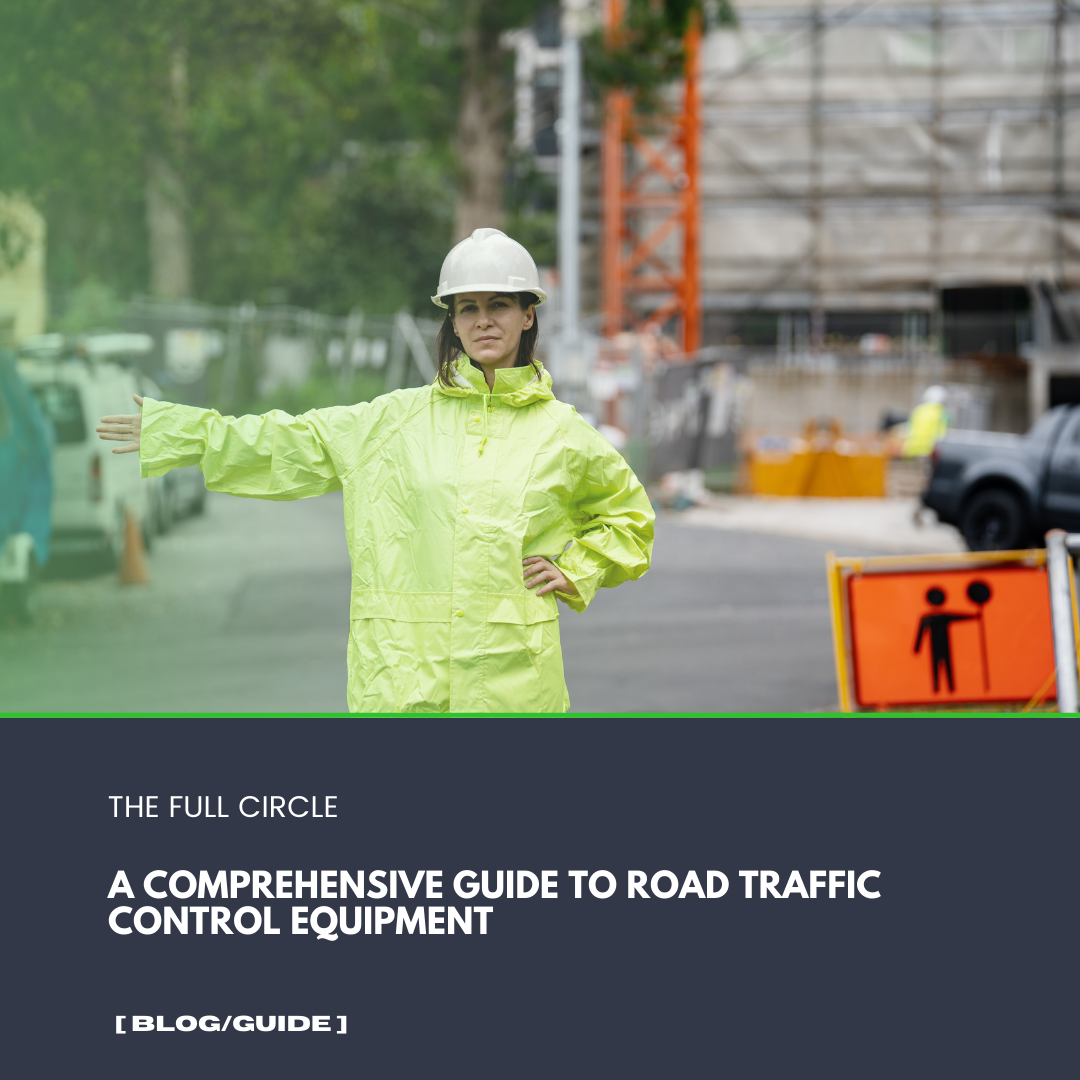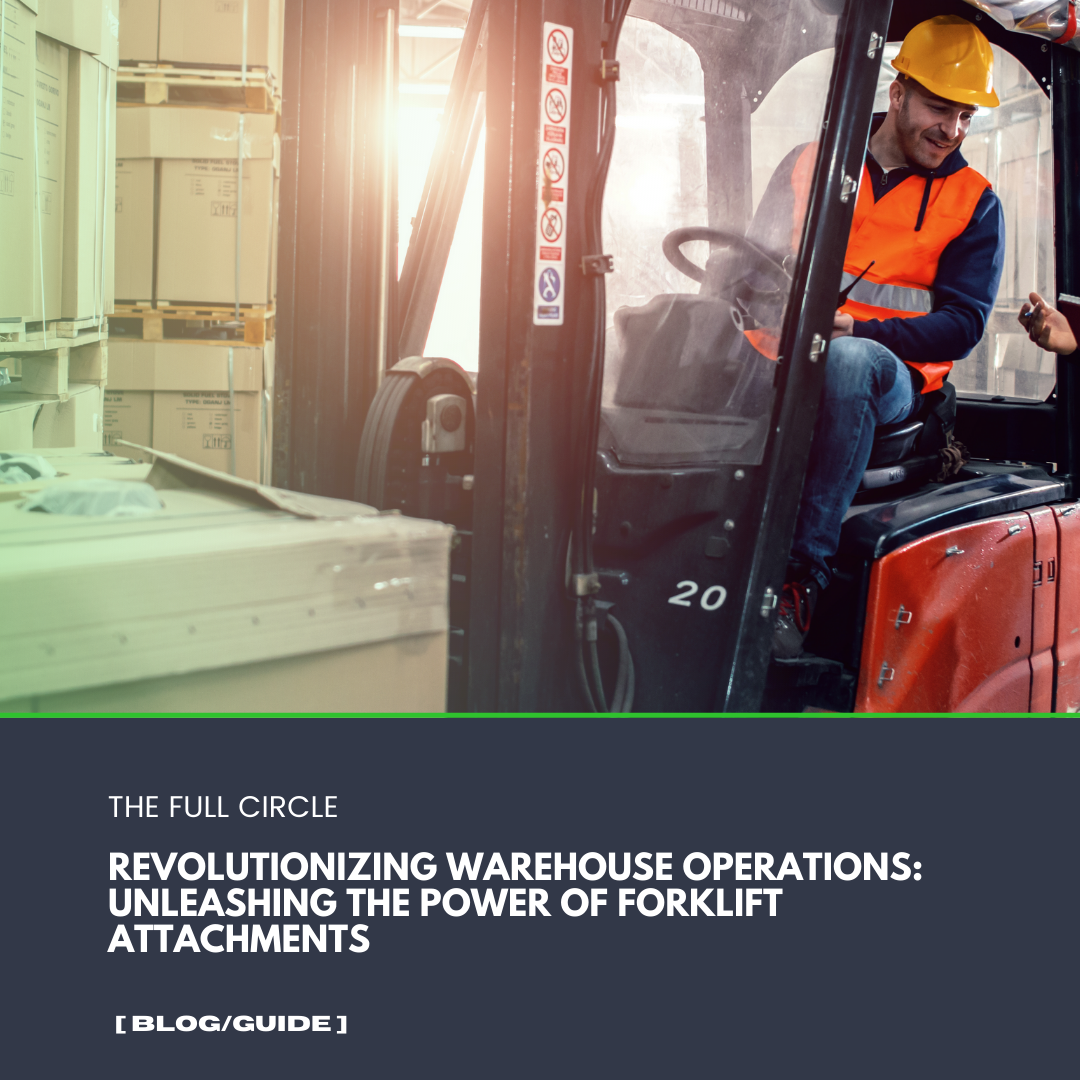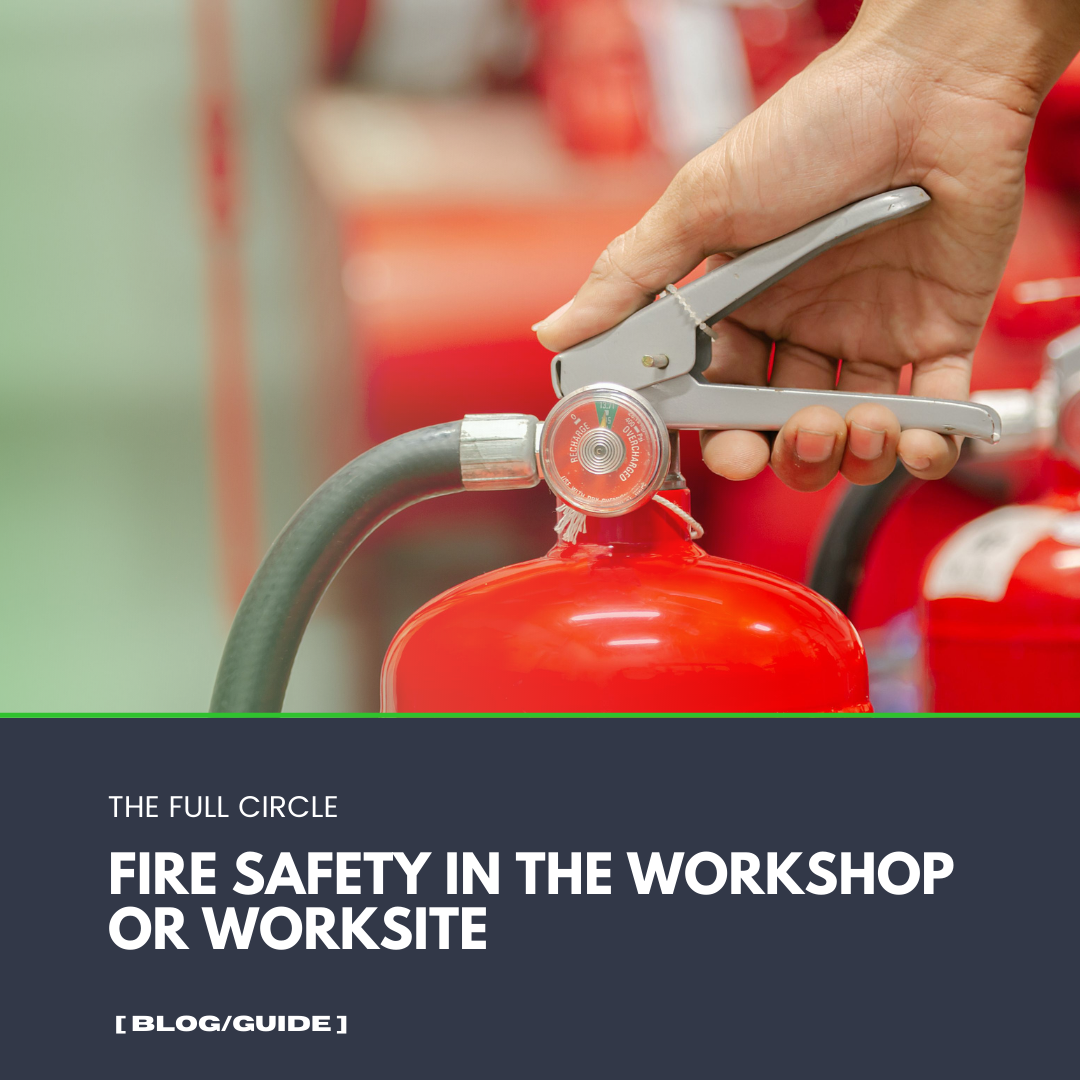A Comprehensive Guide to Road Traffic Control Equipment
Read more...
Author: Workshop360 Date Posted:3 November 2022

If you are looking at purchasing a generator, it may feel overwhelming choosing from the wide variety there is on offer. Thankfully, there are a few simple questions to answer that will narrow down your choice to exactly what you need.
To begin with, the three main uses of generators include industrial power supply (for cases where power will always or occasionally be in higher demand than the grid can supply all at once), backup power supply (in case of an inconsistent supply or a power supply failure), and portable power supply (for instances where there is no pre-existing power supply on site or you don’t want to run extension cords through half a mile of your worksite, down the stairs, through the break room, over the forklift area, up a scaffold and in the guttering before it gets where you need it).
Once you know which of these three areas your generator should fit into, it starts to narrow down the size of generator you’ll want and if it needs to be portable. Industrial power supply needs are mostly much greater than backup or portable power supply needs, so bigger generators will be necessary.
While there are large, portable, industrial-level generators do exist, the vast majority of portable generators are a lot smaller. Which makes sense. I mean, no one wants to try lugging a 700 kg industrial generator up a ladder, not unless there is a Guinness world record on the line. But there are other trade-offs between a portable and a fixed generator, other than the higher-powered options of fixed ones.
If you want a lot of power, then fixed generators are for you, with the most powerful ones coming in at hundreds of kVA (kilo volt-amperes – more on power requirements further down). This makes them ideal for industrial usage or as a backup power supply for a large workplace that needs power 24/7. They can often be three-phase as well, which is better for higher loads than single-phase.
Fixed generators are also generally larger than portable generators, meaning they have a bigger fuel capacity, and are quieter than portable generators (because there are more noise dampening components in the housing of fixed generators).
But even if you don’t need hundreds of kVA, there are fixed generators that meet your power and price points, like the Kubota diesel generator which has similar models that can provide 16kVA, 12.5kVA and 11.8kVA. Even at this much lower power scale, these generators will come with bigger fuel capacity and are often quieter.
For instance, the fixed 6kVA Kubota diesel generator has a lower power output than the portable Honda 8kVA generator, but the Kubota is only 66.5dBA versus the Honda which is 72dBA (remember that every increase of 10 dBA is actually 10 times louder). On top of that, the Kubota has a much heftier tank capacity of 28L versus the Honda’s 6.1L. And we all know that, sometimes, it’s not about the power output but about having the quiet stamina to keep going all night.
As a side note, fixed generators need to be installed by a qualified electrician if they are for use as backup power, so they switch on properly when the usual power supply cuts out. But maybe you’re not all about being tied down and immovable, maybe you need something a bit less about all that power. Then portable generators are your best bet.
Portable generators are more versatile than fixed generators and can more precisely meet your power needs on the lower end of the power scale. Of course, portable generators are best for situations where is no permanent power supply on site yet (or won’t ever be), as well as for places where a fixed generator wouldn’t work because there simply isn’t the room available.
Portable generators can be also used for backup power on a less grand scale and can be neatly tucked away elsewhere when not in use. There are two types of portable generators: open-framed (uncovered) and closed-framed (covered) and each has its pros and cons.
Open-framed generators don’t have a cover, which makes them easier to access for maintenance but unfortunately usually leaves them noisier than closed-framed ones. A type of open-framed generator, known as workstations, are purpose made for welding and come with welding leads.
Closed-framed generators do have a cover which reduces noise but does make them harder to take apart (well, actually, most people can take things apart fairly easily, it’s putting them back together again without having any screws left over which is the issue). They can also weigh more, as is the case with the Hyundai generator 8kVA options.
The DHY8700SE-LRS Hyundai generator 8kVA is a closed-frame generator which weighs in at 176 kg, compared to the open-framed HY9000LEK Hyundai generator 8kVA which weighs less than half of that, at only 86 kg. And the HY9000LEK open-framed generator is designed for outdoor use, with rough terrain wheels much larger than those on the closed-framed counterpart.
One the other end of the spectrum is another important type of covered generator, called an inverter generator. The most common brand for inverters is Hyundai generators, and this type of generator is more fuel efficient, smaller, quieter, and better for running electronics (which can be sensitive to power fluctuations). All this does make them more expensive, but they would be ideal for a small, on-site work office that needs to power up some laptops and the like.
They also don’t pack as big a punch when it comes to power supply, so you have to make sure they’re good enough to manage the worksite office aircon as well, unless you enjoy having paperwork stick to sweaty forearms. That said, they do seem to make their plucky, little blue Hyundai generators Australia summer ready.
So far so good, you know where you stand with fixed versus portable and whether you’re using it for industrial, backup or simply portable power. But how do you know how much power you need?
This is the only step that might take a bit of work, depending on the number of things you need to supply power to. For a fixed generator supplying power to a whole building, it may be more prudent to outsource the issue to an electrician because the process of listing out every single item in a whole office that needs powering and finding the wattage for each is likely a much more painful, time consuming and therefore costly exercise than hiring someone who has experience. And if you plan on using the backup power supply to run sprinklers and other emergency devices, it may even be a requirement to get outside advice.
But, if you only have a few devices needing power, it’s not too hard to get it done yourself. A lot of device specifications list their running power (a.k.a. rated power) in watts, as well as a power factor, which can be used together to get kVA (kilo volt-amperes) which is what generators are often labelled with.
If devices are listed with watts (W), then it doesn’t seem to make sense to list generators by volt-amperes (VA). The problem is that devices list only the power they actually use (watts), not the total power that is supplied to them (VA).
Take a freezer, for example. Even a very good freezer might only use 95% of the power supplied to it. In the freezer specifications, this will be labelled as a power factor of 0.95. And the specs will also list a running power of 95 W. If we divide 95 W by the power factor of 0.95, we get 100 VA. So, the freezer actually requires 100 VA because 5% of the power is not actually being used. This is why it’s important to use VA when doing your calculations, because a 95VA generator (how cute and tiny it would be) would stall if we plugged the freezer into it because the freezer would be trying to pull 100VA.
Sometimes you will get device specifications that actually do list the kVA directly, which is super useful. But other times you have to divide the running (a.k.a. rated) power in W by the power factor to get the VA (and then divide by 1000 to get kVA, since 1kVA = 1000VA). But if all this seems like too much maths, just search online for a kVA to W conversion calculator and just put the numbers in.
And if they don’t list the power factor in the specs, then you can either follow up with customer service or guess the approximate value, knowing that modern devices usually have a good power factor closer to 1 (and older devices can be as bad as 0.8 power factor).
As you find the running power of the devices that will be connected, convert them to kVA and add them up. Also make a note of the start up power (in watts) if it is listed. Fridges and freezers can use a lot of power to get started, sometimes even 10 times more watts than the running power. This means your generator needs to have capacity for the starting power as well. A fridge that needs 1 kW to start but only 400 W to run could stall a generator without a sufficient (1kW) margin.
Basically, all this means is finding out which device has the highest starting power requirement and then adding that value onto the value that you got by adding up all the running power numbers. So, say I had 4 freezers and 1 hair straightener I wanted backup power for (my company is called Frosted Tips and we are accepting sophisticated investors). I first divide running cost of 400W by 0.95 power factor to get about 422VA which is 0.422kVA. And there are four, so that’s a total of 1.688kVA.
My hair straightener has the kVA listed at 0.167kVA so that’s 1.855kVA total now. But now I have to add on my 1kW of start up power, so I divide by the power factor to get 1.05kVA and add that on to my total to get 2.905kVA. After all that, now I know I need a general that can handle at least 3kVA. And since I’m considering expanding my business by buying another freezer and I’ve heard good things about the 4.5kVA Yanmar generator, I will go for that one.
A good, frosty tip to know is that connecting devices with the highest starting wattage first is better because then there is more leeway. If you connected all your smaller devices and they didn’t leave enough power to start the fridge, then try connecting the fridge first and letting it settle into its running power consumption before connecting the small devices. But remember never to run a generator indoors without adequate ventilation.
It’s vital to know before purchasing a generator that using a generator in an enclosed space is a serious health threat. Carbon monoxide is a toxic gas that is odourless and colourless and causes poisoning and even death. This means that fixed generators are usually installed outside, and portable generators should also be kept outside when in use, or at the very least in a very well-ventilated area.
Overview
Choosing a generator can seem like a convoluted issue, but it’s really not that hard. Once you know what you’re using the generator for, whether it needs to be fixed or portable, and have gone through tallying up the power requirements, the sensible options become clear. Workshop360 has all the top brands of fixed and portable generators, including open-framed, closed-framed, inverter generators, as well as workstations designed for welding.

Read more...

Read more...

Read more...

Read more...

Read more...

Subscribe to our newsletter to get exclusive deals and updates!
 Afterpay
Afterpay Bank Deposit
Bank Deposit PayPal Express
PayPal Express Web Payments
Web Payments Web Payments
Web Payments MasterCard
MasterCard Visa
VisaWelcome to our website. If you continue to browse and use this website, you are agreeing to comply with and be bound by the following terms and conditions of use, which together with our privacy policy govern EagleXP T/A Workshop360’s relationship with you in relation to this website. If you disagree with any part of these terms and conditions, please do not use our website.
The term ‘EagleXP T/A Workshop360’ or ‘us’ or ‘we’ refers to the owner of the website whose registered office is Unit 1, 18 Gravel Pit Road, Darra, QLD, 4076. Our ABN is 14 622 985 068. The term ‘you’ refers to the user or viewer of our website.
The use of this website is subject to the following terms of use:
This Privacy Policy describes how your personal information is collected, used, and shared when you visit or make a purchase from www.workshop360.com.au (the “Site”).
When you visit the Site, we automatically collect certain information about your device, including information about your web browser, IP address, time zone, and some of the cookies that are installed on your device. Additionally, as you browse the Site, we collect information about the individual web pages or products that you view, what websites or search terms referred you to the Site, and information about how you interact with the Site. We refer to this automatically collected information as “Device Information”.
We collect Device Information using the following technologies:
Additionally, when you make a purchase or attempt to make a purchase through the Site, we collect certain information from you, including your name, billing address, shipping address, payment information (including credit card numbers & payment account numbers Paypal, Afterpay, ZipPay), email address, and phone number. We refer to this information as “Order Information”.
When we talk about “Personal Information” in this Privacy Policy, we are talking both about Device Information and Order Information.
We use the Order Information that we collect generally to fulfil any orders placed through the Site (including processing your payment information, arranging for shipping, and providing you with invoices and/or order confirmations). Additionally, we use this order information to:
We use the Device Information that we collect to help us screen for potential risk and fraud (in particular, your IP address), and more generally to improve and optimize our Site (for example, by generating analytics about how our customers browse and interact with the Site, and to assess the success of our marketing and advertising campaigns).
We share your Personal Information with third parties to help us use your Personal Information, as described above.
We also use Google Analytics to help us understand how our customers use the Site-you can read more about how Google uses your Personal Information here: https://www.google.com/intl/en/policies/privacy/. You can also opt-out of Google Analytics here: https://tools.google.com/dlpage/gaoptout.
Lastly, we may also share your Personal Information to comply with applicable laws and regulations, to respond to a subpoena, search warrant or other lawful request for information we receive, or to otherwise protect our rights.
As described above, we use your Personal Information to provide you with targeted advertisements or marketing communications we believe may be of interest to you. For more information about how targeted advertising works, you can visit the Network Advertising Initiative’s (“NAI”) educational page at http://www.networkadvertising.org/understanding-online-advertising/how-does-it-work.
You can opt out of targeted advertising by:
Facebook - https://www.facebook.com/settings/?tab=ads
Google - https://www.google.com/settings/ads/anonymous
Bing - https://advertise.bingads.microsoft.com/en-us/resources/policies/personalized-ads
Additionally, you can opt-out of some of these services by visiting the Digital Advertising Alliance’s opt-out portal at: http://optout.aboutads.info/.
You can also do a blanket opt-out of targeted advertising at http://www.youronlinechoices.com.au/ for companies who have signed up to “Your Online Choices”.
This website uses the Google AdWords remarketing service to advertise on third party websites (including Google) to previous visitors to our site. It could mean that we advertise to previous visitors who have completed a task on our site, for example using the contact form to make an enquiry or making a purchase.
This could be in the form of an advertisement on the Google search results page, or a site in the Google Display Network. Third-party vendors, including Google, use cookies to serve ads based on someone’s past visits to this website. Of course, any data collected will be used in accordance with our own privacy policy and Google’s privacy policy.
You can set preferences for how Google advertises to you using the Google Ad Preferences page.
Please note that we do not alter our Site’s data collection and use practices when we see a Do Not Track signal from your browser.
Under Australia Consumer Law you are entitled to rights regarding the collection and usage of your information. For more information on your rights visit the ACCC website: www.accc.gov.au
When you place an order through the Site, we will maintain your Order Information for our records unless and until you ask us to delete this information.
We may update this privacy policy from time to time in order to reflect, for example, changes to our practices or for other operational, legal or regulatory reasons.
For more information about our privacy practices, if you have questions, or if you would like to make a complaint, please contact us by e-mail at admin@workshop360.com.au or by mail using the details provided below:
Unit 1/18 Gravel Pit Road, DARRA, QLD, 4076, AUSTRALIA


Add your favourites to cart

Select Afterpay at checkout

Log into or create your Afterpay account, with instant approval decision

Your purchase will be split into 4 payments, payable every 2 weeks
All you need to apply is to have a debit or credit card, to be over 18 years of age, and to be a resident of country offering Afterpay
Late fees and additional eligibility criteria apply. The first payment may be due at the time of purchase
For complete terms visit afterpay.com/terms
Article%20Images%20-%20generators.jpg)
Article%20Images%20-%20generators2.jpg)